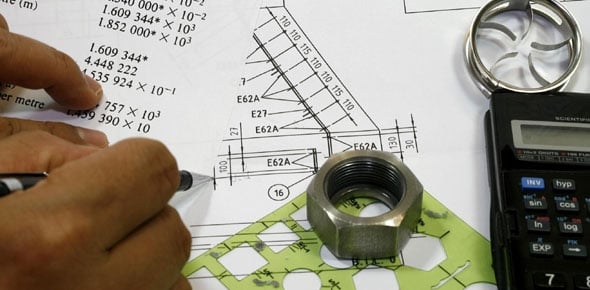(601) Which 54H60–117 propeller subassembly transmits engine...
(611) The "C" in the engine number GTCP 165 indicates that the engine
(611) The pneumatic air bled from the small gas turbine engine cannot...
(604) What type of force used during pitchlock of the 54H60–117...
(614) On GTCP 165 engine shutdown, what valve closes to ensure...
(601) Which 54H60–117 propeller subassembly carries high...
(608) Besides maintaining the optimum blade phase angle relationship...
(606) Once an overspeed 54H60–117 propeller condition is...
(601) On the 54H60–117 propeller, which component's purpose is...
(602) On the 54H60–117 propeller, during normal propeller...
(602) On the 54H60–117 propeller, which pump(s) is/are used...
(602) On the 54H60–117 propeller, which valve assists the...
(615) On a GTCP 165 engine oil system, air that leaks past various oil...
(603) On the 54H60–117 propeller, if the main filter becomes...
(616) During a normal start on a GTCP 165 engine, the igniter plug...
(604) The purpose of the 54H60–117 propeller pitchlock assembly...
(601) On the 54H60–117 propeller, which component delivers the...
(601) On the 54H60–117 propeller, which dome assembly part...
(612) The impeller wheel and two turbine wheels in the turbine section...
(601) On the 54H60–117 propeller, what function is a task of the...
(617) On a GTCP 165 engine, air for the load control system is...
(609) If the slave propeller blades are in the correct phase angle...
(610) In the event the R391 Dowty propeller lost hydraulic pressure,...
(607) When attempting to unfeather the 54H60–117 propeller in...
(611) When used for ground operation, the SGT engine can be installed...
(601) On the 54H60–117 propeller, which pitchlock component...
(603) On the 54H60–117 propeller, when the backup valve is...
(603) On the 54H60–117 propeller, which type of valve opens to...
(601) On the 54H60–117 propeller, what component is installed on...
(603) On the 54H60–117 propeller, which pressure pump is used to...
(608) How much change in rpm does the compensating network in the...
(605) Constant speed can only occur when the throttle is positioned...
On a GTCP 165 engine, which component shuts the engine down if the oil...
(602) The 54H60–117 propeller governor speeder spring tension...
(608) The master synchrophaser board located in the synchrophaser unit...
(609) For the 54H60–117 propeller to operate in the normal...
(605) What is coordinated by the throttle in the controllable pitch...
(602) On the 54H60–117 propeller, what switch, located in the...
(610) Which R391 Dowty propeller component routes engine oil to and...
(615) What type of sump design is the oil system on a GTCP 165 engine?
(616) During normal GTCP 165 engine shutdown, what circuit trips to...
(609) Which propeller governing modes add more functionality to basic...
(606) On the 54H60–117 propeller, what is the beta range...
(610) What R391 Dowty propeller assembly part provides an aerodynamic...
(606) During alpha range operation on the 54H60–117 propeller,...
(606) During an overspeed condition in the alpha range on the...
(602) On the 54H60–117 propeller, which cam schedules a desired...
(603) On the 54H60–117 propeller, when standby pump output is...
(607) During feather operation on the 54H60–117 propeller, what...
(604) On the 54H60–117 propeller, what forces the stop levers on...
(607) During 54H60–117 propeller feathering operation, the...
(604) What will keep the rotating and stationary ratchets disengaged...
(607) On the 54H60–117 propeller, what is the minimum psi...
(609) How many slave channels are contained on the master...
(613) On a GTCP 165 engine, the accessory drive section aft housing...
(606) On the 54H60–117 propeller, during beta range operation,...
(604) What prevents engagement of the stationary and rotating ratchets...
(607) When feathering the 54H60–117 propeller, what acts on the...
(601) On the 54H60–117 propeller, which dome assembly component...
(608) On the 54H60–91 propeller speed bias motor, what results...
(604) When pressure builds to between 240 and 280 psi on the...
(606) In the beta range of the 54H60–117 propeller, which cam...
(609) When an increase in rpm occurs during engine speed...
(609) In the mechanical governing mode, what causes the pilot valve to...
(614) On a GTCP 165 engine, which signals are used by the fuel control...
(607) Which two cams on the alpha shaft control the 54H60–117...
(617) During load control system operation on a GTCP 165 engine, the...
(607) During the 54H60–117 propeller feathering operation, which...
(608) What rpm in the alpha range are the fuel governing check...
(617) The modulating and shutoff valve on a GTCP 165 engine will be...
(606) During an underspeed condition on the 54H60–117 propeller,...
(608) Which switch has a spring-loaded guard to hold it in the NORMAL...
(602) On the 54H60–117 propeller, which cam disarms the NTS...
(607) Which component on the 54H60–117 propeller is the primary...
(607) Which valve is a backup in case the feather valve fails during...
(606) During beta range operation on the 54H60–117 propeller,...
(602) On the 54H60–117 propeller, which valve connects the main,...
(607) On the 54H60–117 propeller, after the NTS system actuator...
(607) During the 54H60–117 propeller feathering operation, which...
















